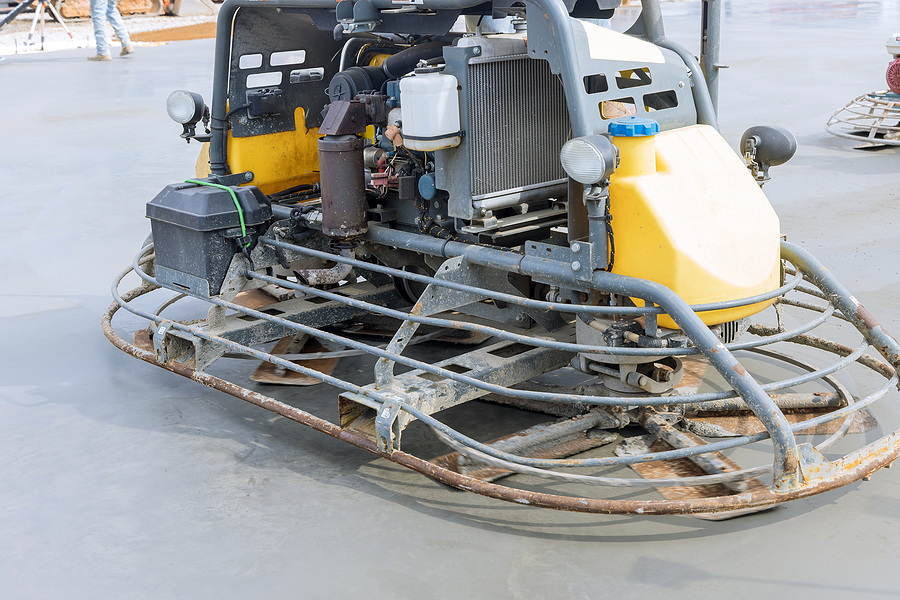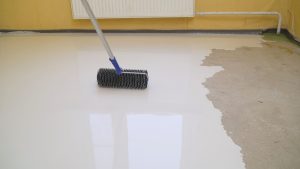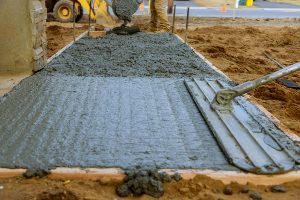Choosing between high-gloss vs. matte concrete floor finishes comes down to how you use the space, the look you want every day (not just on install day), and how much maintenance you’re willing to do. Both finishes are durable, beautiful, and long-lasting when the polishing system and sealer are dialed in. But they read very differently in real life, under your lights, with your traffic, and your cleaning routine. Here’s how to decide.
The Look: Reflective Drama vs. Understated Calm
High-gloss delivers that mirrorlike, showroom pop. It amplifies natural and artificial light, makes colors and aggregate “spark,” and can visually enlarge a space. Matte has a soft, low-sheen presence that hides dust, scuffs, and minor imperfections better. If your design calls for quiet luxury or a gallery vibe that lets products or artwork do the talking, matte often wins. If you want a statement floor that feels premium the second you walk in, gloss is hard to beat. This is the core of matte vs glossy concrete floors, impact versus subtlety.
Lighting Matters More Than You Think
Gloss multiplies whatever lighting you have. With strong downlights or sunlight, high-gloss can reveal waves, trowel lines, or patch halos you’d never notice at matte. Matte diffuses light, softening those visual echoes. If your space has long runs of windows or direct sun, expect highlights and glare with gloss; plan shading, fixture aiming, or a satin compromise to keep things comfortable.
Maintenance Reality: Daily Life on the Floor
High-gloss shows footprints, dust, and mop streaks sooner. You’ll want consistent dust-mopping and well-maintained autoscrubber pads to preserve clarity. Matte is more forgiving of busy days and imperfect cleaning routines. Both finishes benefit from a neutral cleaner, fresh pads, and prompt spill cleanup, but Matte lets you stretch between touch-ups without looking unkempt.
Slip Resistance & Safety
A polished floor’s slip profile is driven by the microtexture and the guard/sealer, not just the sheen. Gloss can be engineered to meet traction targets with the right tooling sequence and guard, and matte can be slippery if the chemistry isn’t tuned. For entries, kitchens, or wet zones, ask for a traction-enhanced guard or a light, uniform traction additive in the top treatment. Don’t assume low sheen automatically means higher grip; test it.
Durability & Traffic
Both finishes use the same backbone: proper surface prep, matched metal and resin tooling, and the right densifier timing. High-gloss requires more refinement (higher grits, tighter scratch pattern) and will keep that glassy look longer if daily maintenance is on point. Matte tolerates scuffing better visually and can mask micro-wear. Forklifts, hard wheels, and sandy foot traffic will mark any floor; the question is how noticeable it is. Matte usually wins on camouflage; gloss wins on immediate visual payoff when it’s clean.
Cost & Schedule
Reaching a true high gloss often means more steps, think 800/1500/3000 grit and extra edge detailing, so it can take longer and cost more up front. Matte typically stops at a lower grit set (e.g., 400–800) and uses a low-sheen guard, which trims time. Over the life of the floor, a glossy finish can cost a bit more to maintain if you expect that show-floor look daily; matte can be more budget-friendly to live with.
Design Cues: Where Each Finish Shines
- High-Gloss: Showrooms, lobbies, retail flagships, studios, and statement residential spaces where reflectivity is part of the design language. It pairs beautifully with rich dye colors and full-aggregate exposures.
- Matte: Grocery, education, light industrial, restaurants, galleries, and modern homes seeking warmth and minimal glare. It’s excellent with natural “cream” finishes and subtle dye work.
Color, Aggregate & Sheen Interactions
Deeper aggregate exposure plus high gloss = sparkle and depth. Cream finishes (minimal aggregate) with matte = smooth, architectural calm. Dark dyes look richer under gloss but reveal streaks faster; light neutrals love a matte or satin that keeps glare down. If you’re torn, satin can be a smart middle ground, enough reflectivity for energy, without the maintenance intensity of full gloss.
How to Choose the Right Finish (Without Regret)
- Walk the space at different times of day. Note glare, sunlight paths, and fixture angles.
- Be honest about maintenance. If daily autoscrubbing isn’t realistic, matte or satin will look better, longer.
- Align with brand and experience. Do you want “wow” on entry or a calm, premium canvas?
- Mock up a test area. Run a small zone to target sheen with your lighting and traffic before committing.
- Set performance specs, not just words. Define gloss readings (GU), traction targets, and a cleaning plan along with “High-Gloss vs. Matte Concrete Floor” in your scope.
The Bottom Line
There’s no universal winner in high-gloss vs. matte concrete floor finishes. High gloss delivers maximum drama and depth when you can support it with lighting control and consistent cleaning. Matte offers modern restraint, excellent camouflage, and a friendlier maintenance curve. Think beyond the sheen label, your slab condition, lighting, traffic, and maintenance plan should make the final call on matte vs glossy concrete floors.
Want help choosing the perfect sheen for your space? Let’s assess your slab, lighting, traffic, and budget, then dial in the tooling sequence and guard chemistry to match. Request your polishing finish consultation and custom quote today.



